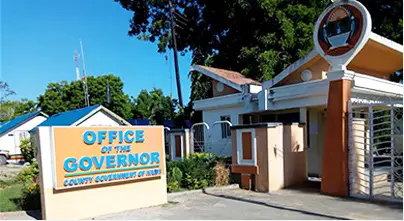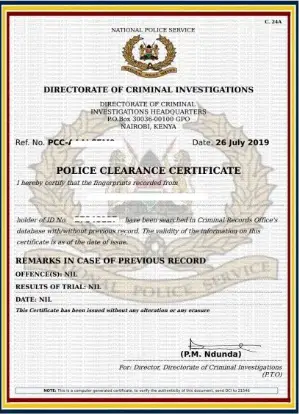If you are a vehicle owner in Kenya, you need to have a reflective number plate on your vehicle. Reflective number plates are designed to improve road safety by making it easier for law enforcement officers to identify vehicles and their owners.
The National Transport and Safety Authority (NTSA) is responsible for issuing reflective number plates in Kenya.
NTSA reflective number plates are made of high-quality materials that are designed to last for many years. They are available in different sizes and formats depending on the type of vehicle you own. For example, if you own a private car, you can choose between square and oblong formats.
To apply for an NTSA reflective number plate, you need to visit the NTSA TIMS portal and follow the application process. You will need to provide your vehicle registration details and pay the required fee.
Once your application is approved, you will receive a notification to collect your new number plates from a designated location.
It is important to note that NTSA reflective number plates are mandatory for all vehicles in Kenya. Failure to comply with this requirement can result in fines or other penalties. So if you haven’t already done so, make sure you apply for your new NTSA reflective number plates today.
Implementation of Reflective Number Plates
If you own a vehicle in Kenya, you must have a reflective number plate. The National Transport and Safety Authority (NTSA) implemented the use of reflective number plates to enhance road safety and reduce crime.
This section will explain the legal framework and procedure for acquisition of reflective number plates.
Legal Framework
The use of reflective number plates is mandatory in Kenya, as per the Traffic (Registration Plates) Rules, 2016. The rules require all motor vehicles and trailers to have reflective number plates that meet the Kenya Bureau of Standards (KEBS) specifications.
The reflective number plates have a unique identification number, which helps in easy identification of the vehicle, and a QR code that contains the vehicle details.
Procedure for Acquisition
To acquire a reflective number plate, you need to follow these steps:
- Log in to your NTSA TIMS account. If you don’t have an account, create one by following the prompts.
- Select the vehicle you want to apply for the reflective number plate for from the list of vehicles in your account.
- Click on the “Apply for Reflective No. Plate” button.
- Verify the vehicle details and click “Next.”
- Select the reason for applying for the reflective number plate, which is the new generation plate.
- Choose the notification method, either email or SMS.
- Select the number plate format, either square or oblong.
- Choose the preferred collection point for the new number plate.
- Pay the KES 3,000 fee through the available payment options.
After completing the above steps, you will receive a notification confirming your application. You can then collect your new reflective number plate from the collection point you selected during the application process.
Benefits of Reflective Number Plates
Reflective number plates have been introduced by the National Transport and Safety Authority (NTSA) in Kenya to enhance road safety and vehicle identification.
Here are some of the benefits of using reflective number plates on your vehicle.
Road Safety
Reflective number plates increase road safety by making it easier for other drivers to see and identify your vehicle, especially in low light conditions.
The reflective material used on the number plates reflects light back to the source, making the number plates more visible from a distance. This helps to reduce the risk of accidents caused by other drivers not seeing your vehicle in time.
Vehicle Identification
Reflective number plates also make it easier for law enforcement agencies to identify your vehicle and track its movements. The reflective material used on the number plates makes them more visible from a distance, allowing law enforcement officers to easily identify your vehicle even in low light conditions.
In addition, reflective number plates help to reduce the incidence of logbook fraud and other illegal activities involving vehicle identification.
The reflective material used on the number plates makes it more difficult for criminals to tamper with or forge the number plates, making it easier for law enforcement agencies to detect and prevent such activities.
Challenges and Controversies
While the introduction of NTSA’s new reflective number plates has been met with enthusiasm by some, it has also faced several challenges and controversies.
In this section, we will discuss some of the issues that have arisen.
Technical Glitches
One of the biggest challenges facing the implementation of the new number plates has been technical glitches. Some users have reported difficulties in accessing the NTSA portal, while others have experienced delays in receiving their plates.
These issues have caused frustration among motorists, who are eager to switch to the new plates.
Cost
Another controversy surrounding the new number plates is the cost. At Ksh. 3,000 per plate, some motorists have argued that the price is too high, especially for those who own multiple vehicles.
However, the NTSA has defended the cost, stating that it is necessary to cover the expenses of producing the new plates.
Enforcement
Enforcing the use of the new number plates has also proven to be a challenge. While the NTSA has set a deadline for all motorists to switch to the new plates, some have been reluctant to do so.
This has led to concerns about the effectiveness of the new system, and whether it will be able to achieve its intended purpose of enhancing road safety.
Conclusion
Overall, the introduction of NTSA’s new reflective number plates has been met with both excitement and skepticism. While the new plates have the potential to enhance road safety and improve the efficiency of the transport system, they also face several challenges and controversies.
It remains to be seen how these issues will be addressed and whether the new system will be successful in achieving its goals.
Future Prospects of Reflective Number Plates
Reflective number plates are a significant improvement over traditional number plates. They are easier to read, more durable, and resistant to damage. Reflective number plates also enhance road safety by increasing visibility in low-light conditions.
In the future, reflective number plates are likely to become even more advanced. Here are a few potential developments to keep an eye on:
- Smart number plates: Smart number plates could be equipped with RFID chips or other technologies, allowing for easy identification and tracking of vehicles. This could be useful for law enforcement, toll collection, and other purposes.
- Digital number plates: Digital number plates could display dynamic information such as the driver’s name, vehicle registration date, or even advertising. This could be useful for commercial vehicles or for emergency services.
- Improved security features: Reflective number plates could be equipped with additional security features such as holograms, watermarks, or other anti-counterfeiting measures. This could help prevent fraud and theft of number plates.
- Integration with autonomous vehicles: As autonomous vehicles become more common, reflective number plates could be used to help them navigate and communicate with other vehicles on the road.
Overall, reflective number plates have a bright future ahead. With continued innovation and development, they could become even more useful and versatile in the years to come.
Frequently Asked Questions
How do I apply for a reflective number plate online?
To apply for a reflective number plate online, you need to log in to your TIMS account on the NTSA portal. Once logged in, navigate to the “Apply for reflective number plate” section and select the type of vehicle you want to apply for.
You will then be prompted to indicate the number plate type and submit the name of the person who will pick it up and your preferred location.
Alternatively, you can send a text message with the word “NTSA” to 22847 to start the application process.
What is the cost of reflective number plates in Kenya?
The cost of reflective number plates in Kenya is Ksh. 3,000. This fee is payable through the NTSA portal or at any KCB bank branch countrywide.
What are the latest number plate designs in Kenya?
The latest number plate designs in Kenya are the new generation number plates, which are digital and enhanced with security features aimed at fighting fraud cases such as motor vehicle theft, log book scams, and terrorism.
These plates are mandatory for all vehicle owners, and the application process is ongoing.
How do I replace my NTSA number plate?
To replace your NTSA number plate, you need to visit any NTSA office and fill out a replacement form. You will be required to pay a replacement fee of Ksh. 1,000, after which your new number plate will be processed and issued.
What is the NTSA portal and how do I access it?
The NTSA portal is an online platform where vehicle owners can access various services offered by the National Transport and Safety Authority.
To access the portal, you need to create an account on the NTSA website and log in using your credentials.
What is the meaning of the KX number plate in Kenya?
The KX number plate in Kenya is a special registration number reserved for government vehicles. This plate is issued by the NTSA and is used to identify government vehicles on the road.
Final Thoughts
Congratulations! You have successfully applied for the new NTSA reflective number plates. You can now enjoy the enhanced security features that come with the new generation plates.
Remember to pick up your new plates from the selected location that you indicated during the application process. The NTSA will send you a text message when your plates are ready for collection.
It is important to note that the new generation plates cost Ksh3,050 for a vehicle and Ksh1,550 for a motorcycle replacement. The application process is done online on the NTSA TIMS portal.
Ensure that you have uploaded the necessary documents such as the original logbook and plates (rear and front) in pdf format during the application process. This will ensure that your application is processed within the stipulated seven working days.
In case you have any questions or concerns regarding the new generation plates, the NTSA has responded to the 10 most asked questions on their website. You can also visit their website for more information on the application process and requirements.



